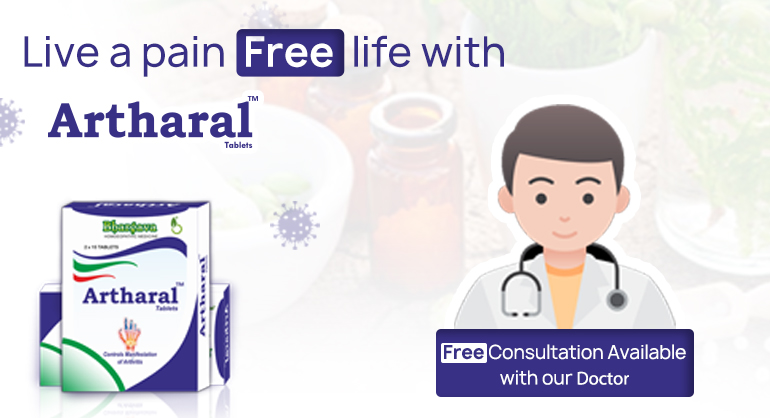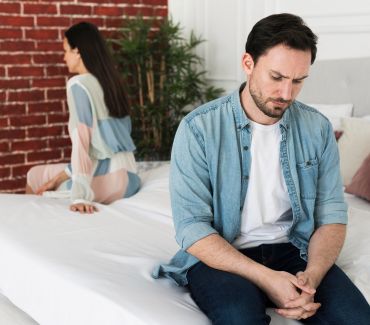Does Homeopathy have a cure for Arthritis?
Arthritis is a disease affecting all or any joint of the human body with synovial fluid causing pain, inflammation, swelling, and diminished movements of joints. From shoulders, elbows, wrists, hips, spine, knees, or ankle joints, arthritis may affect any one or multiple joints of the body in an individual case. Arthritis isn’t a singular disease but has 100s of variations seen in people of all age groups, gender, and race.
From the numerous variations of arthritis, there are 3 most common types of arthritis that are frequently observed in the general population.
3 most typical types of Arthritis:
Juvenile Idiopathic Arthritis – Previously known as Juvenile Rheumatoid Arthritis, is the most common type of arthritis seen in children under the age of 16. The term “idiopathic” means unknown, i.e., researchers haven’t yet been able to find any causes which lead to the activation of this disease in children.
Symptoms most commonly experienced during juvenile idiopathic arthritis are stated below –
-
Stiffness or pain in joints which might be worse when waking up or after staying in one position for a long time.
-
Red, swollen, tender, or warm joints.
-
Feeling tiredness or fatigue
-
High fever
-
Loss of appetite leading to loss of weight
-
Rash
-
Dryness or redness of eyes
-
Irregular growth of bones
If a child has been suffering from similar symptoms, a doctor, after taking the proper medical history as well as the family history of that child, can recommend some laboratory tests as well as imaging such as x-rays to diagnose juvenile idiopathic arthritis.
Osteoarthritis –Osteoarthritis is the most common form of arthritis that affects the elderly. It is a degenerative joint disease in which the flexible and protective tissue at the end of the bones in a joint start to wear down leading to discomfort. Osteoarthritis is most often seen to affect hands, neck, lower back, knees, or hip joints. Though “wear and tear” is a reason behind osteoarthritis, there are other risk factors that may lead an individual to this disease.
Joint Injury – An injury or repetitive stress at a joint causes damage and possible development of osteoarthritis. However, Patients may take homeopathic Medicine for osteoarthritis. Homeopathy medicines are safe to use.
Obesity – Excessive weight gain puts more stress on an individual’s joints, especially the weight-bearing joints of the body such as the knees and hips which increases the risk of developing this disease. Obesity may also lead to metabolic disorders which further increases the risk for osteoarthritis.
Age and Gender – The risk of developing osteoarthritis increases with aging, over the age of 50 years, and is more prevalent in women.
Diabetes and Hyperlipidemia (Elevated cholesterol) – Both diseases are inflammatory responses occurring within the body which increase the risk of development of osteoarthritis.
Hereditary – Genetics play a role in the development of osteoarthritis. If your family members suffering from the disease, you are also likely to develop the same.
Signs and symptoms of osteoarthritis can be easily identified by an individual. They include –
-
Pain and stiffness in joints
-
Tenderness of joints
-
Reduced flexibility results in difficulty in motion after being inactive for some time or sitting in the same position for a long time.
-
Cracking or popping sound of joints
-
Growth of bony spurs in joints
-
Swelling at joints.
Rheumatoid Arthritis –It is an autoimmune and inflammatory chronic joint disease seen in people over the age of 40 to 50 years. Being an autoimmune disorder, i.e., where the body attacks its own tissues, rheumatoid arthritis doesn’t only affect the joints of the body but it might also affect other organs of the body such as skin, eyes, lungs, heart, and blood vessels. Rheumatoid arthritis is 75% more prevalent in women as compared to men with genetics being the underlying cause.
In the early stages of rheumatoid arthritis, the disease affects the small joints of the body such as joints of fingers and toes which if left untreated may lead to deformity of joints.
Later on, as the disease progresses in the body, it spreads to wrists, knees, ankles, hips, and shoulders. Symptoms mostly occur in the same joints in both sides of the body. Signs and symptoms of rheumatoid arthritis include –
- Swollen, warm, and tender joints
- Joint stiffness and pain that is worse in the morning
- Fatigue, fever, and loss of appetite.
Homeopathy Diagnosis of Rheumatoid arthritis can be done very easily by conducting a simple blood test for Rheumatoid factor.
Arthritis and Homoeopathy
When treating arthritis, homeopathy aims to target the underlying cause of joint pains to help alleviate the pain, swelling, and discomfort. The conventional therapies for joint pain include non-steroidal anti-inflammatory drugs, antibiotics, and physiotherapy. When a homeopath is treating a case for arthritis, they consider the complete picture of every individual patient, that is, analyze their physical symptoms as well as their mental symptoms to select a remedy that would perfectly suit their specific individual needs. Some of the frequently prescribed homeopathic medicines for arthritis are mentioned below.
- Arhtaral Tablet – It is one of the commonly used remedies for patients with feelings of numbness and tingling in their extremities along with shooting pains and icy coldness of hands and feet. In rheumatic inflammation of joints, the skin has red shining swelling, very sensitive with pain worse during night time. The joint ligaments are weak and lax. Skin feels red, hot, dry, and burning. It is well suited to elderly people with anxious dreams and disturbed sleep.
- Rhoma Tablet – It is one of the first thought-of remedies used in treating rheumatic complaints of the joints such as pain and stiffness. This remedy is used for patients whose joint complaints are a little better after some movement as motion always limbers up the patient. There is the sensation of soreness and stiffness of joints. The patient does not tolerate cold air. There’s a tenderness about the knee joint and a tingling sensation in the feet. Loss of power in the forearm and fingers is also common.
- Osteo Strong – It is used to treat arthritis in patients suffering from red, swollen, hot, and painful joints with the sensation of stitches and tearing. The last movement makes the pain worse for the patient. The slightest pressure aggravates joint pain. The patient is easily irritable with dryness of all mucous membranes.
Read Comments
Please Add and approve your comment by admin

.jpg)
.jpg)

Add Your Comments
Your Rating